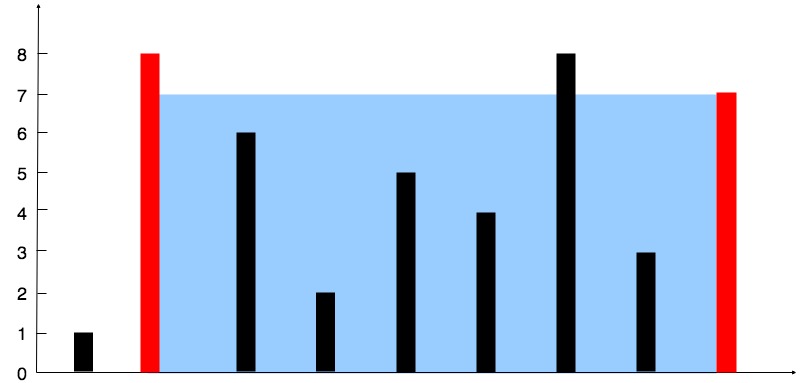11. Container With Most Water
Difficulty: Medium
Topics: Array, Two Pointers
Similar Questions:
Problem:
Given n non-negative integers a1, a2, ..., an , where each represents a point at coordinate (i, ai). n vertical lines are drawn such that the two endpoints of line i is at (i, ai) and (i, 0). Find two lines, which together with x-axis forms a container, such that the container contains the most water.
Note: You may not slant the container and n is at least 2.

The above vertical lines are represented by array [1,8,6,2,5,4,8,3,7]. In this case, the max area of water (blue section) the container can contain is 49.
Example:
Input: [1,8,6,2,5,4,8,3,7] Output: 49
Solutions:
class Solution {
public:
int maxArea(vector<int>& height) {
int left = 0;
int right = height.size() - 1;
int ret = 0;
while (left < right) {
ret = max(ret, (right - left) * min(height[left], height[right]));
if (height[left] <= height[right]) {
++left;
} else {
--right;
}
}
return ret;
}
};
Proof sketch
Let's dp[i][j] denote the optimal solution if the two axises are between i and j, inclusive. The induction then should be:
dp[i][j] = max((j - i) * min(height[i], height[j]), max(dp[i+1][j], dp[i][j-1]));
The only difference between dp[i+1][j] and dp[i][j-1] is the ability to use which axis as the boundary. Without losing generality, suppose height[i] < height[j]. If the optimal result comes from dp[i][j-1] and ith axis is used as the boundary. However, the result is definitely smaller than (j - i) * min(height[i], height[j]).